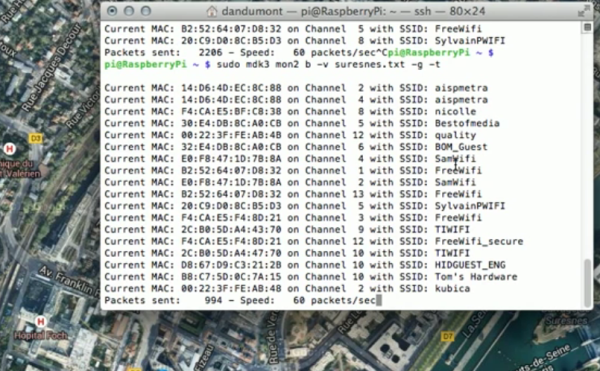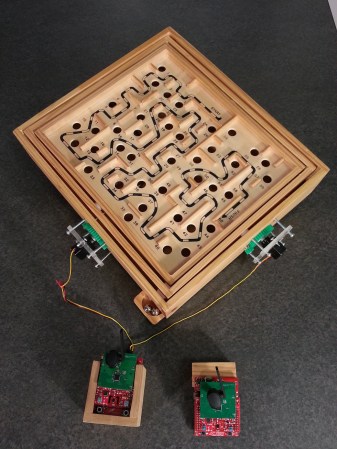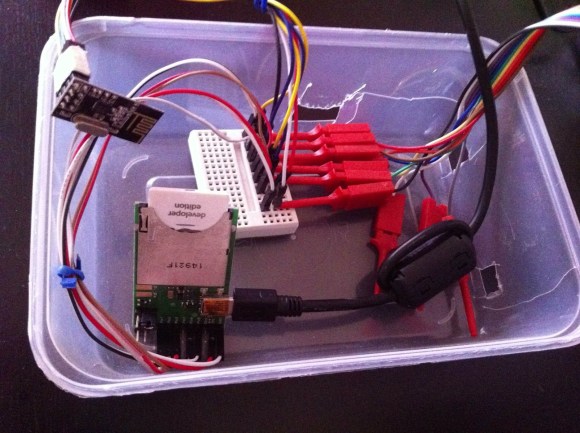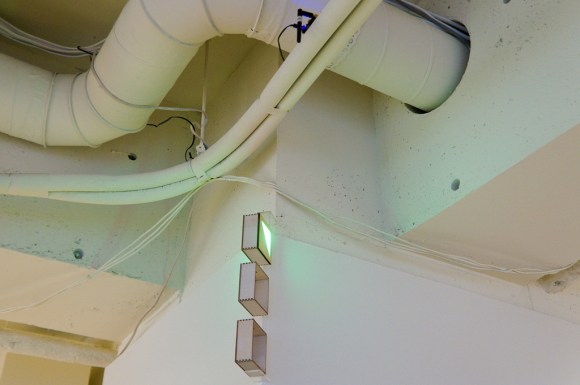
This is a well-executed proof of concept which [Aaron Jeromin] threw together in a couple of hours. This lamp hosts a Bluetooth Low Energy weather display. The project was a way for him to get used to using the BLE module. But to make the most out of that hardware this should really be refined into an actual low energy circuit. We do think the timing is perfect to feature this project since we just looked at a BLE primer yesterday.
He’s using a BLE Mini board from RedBearLab. It uses a Texas Instruments CC2540 SoC. We’d love to see a follow-up that does away with the Arduino in lieu of code running on the TI chip. But we would have done the same thing (use the uC we were most familiar with) when testing the BLE board out for the first time. It gets weather data from an iPhone. The forecast is projected as one of three icons using an LED bulb and a stencil which is positioned by a hobby servo.
Other inanimate objects that can tell you if it’s storming include this color-coded umbrella stand.
















